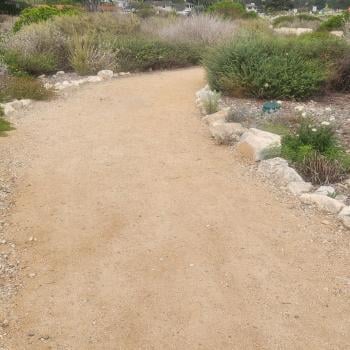I walked into the supermarket aisle where the cereals are displayed. I was stunned when I was faced with the huge array of breakfast cereals. Out of curiosity I began to count. There were over 120 different brands, all on display in that one aisle.
This made me think. In my work, which focuses in part on Third World and development and the environment, one of the operating assumptions economists make is that a country becomes more developed when its citizens have more choices. This is obviously true in a number of important ways, but when I stood in that supermarket looking at the shelves of different breakfast cereals, I began to see that there were real limits to the truth of this understanding of linking development, choice, and consumption.
Then, I began to think about some of the most important choices I've made in my own life -- choices about my job, my marriage, my family. When I chose my job, I didn't have 120 options -- I had only a couple -- and choosing from between this small number forced me to become clear about who I was and what kind of work I valued most. When I was choosing who to marry, I didn't have 120 options -- I had one person that I chose, and committing to that single choice, over the years, has shaped me in deeply important ways. These experiences of limited choice have been some of the most important occasions for spiritual growth in my entire life. I wouldn't be the person I am today if I hadn't wrestled with these choices.
This story has both religious and environmental implications. In addressing one of our culture's shortcomings -- a consuming commercialism -- it invites us to recognize another reason that religion is related to the environment. Both religious and environmental leaders believe that human individuals and cultures find well-being and a truly good life, not through the obsessive pursuit of material consumption, but rather through reverence offered to a greater power and through service offered to a wider community. The time has come for religious and environmental leaders to find common language and to develop shared strategies to make it clear that human restraint in relation to the earth is necessary for human survival, flourishing, and genuine happiness.
Yet there is hope. Many people feel hoodwinked by the marketing onslaught. Many realize that they are not more fulfilled by more stuff. Many people want to change. But it is countercultural in America to seek to consume less, to reduce the amount of resources one uses. Most people who start down this path feel some anxiety at their separation from the predominant cultural norm. I have found repeatedly that people benefit from support, from a sense of community, when they encounter these feelings. Religious institutions can offer this support. Teaching mindfulness about consumption, and offering support for reducing our ecological footprint, should become a new norm in religious institutions, a fundamental dimension of what it means to be spiritually mature.
Environmental Racism, Environmental Justice
Twice each year, GreenFaith organizes a tour to introduce religious leaders to issues of urban environmental health and justice. We visit contaminated sites, inviting local environmental activists to describe their struggles. A recent tour took place in February 2008, when 140 people gathered at First Hopewell Baptist Church in Newark. There were African American clergy, lay leaders and synagogue members. Adults from a large Catholic Church joined a youth group from a suburban Episcopal parish, students from Princeton University, Drew Theological School, Bergen County Community College, and Islamic schools from Paterson. It was a mixed group. People drank coffee and ate doughnuts in the church hall before walking through the bright, crisp day to board their bus.
Over the next three hours, they were introduced to a dizzying array of contaminated sites and to the issue of environmental justice. It has been well proven that communities of color and low-income communities suffer the worst effects of environmental degradation. Our tours are an introduction to that reality. We visited the Pabst Brewery, on Newark's western border. The facility is massive, half demolished, with three derricks dwarfed by the remaining building shell. While developers and politicians have sought to dismantle the brewery and rebuild at a profit, the community has been exposed to extensive amounts of lead-paint dust and tons of airborne asbestos. These toxins have been pulverized and spread around the community. Local leaders such as Paradise Baptist Church's Pastor Jethro James have fought, with some success, to protect the community's health.




